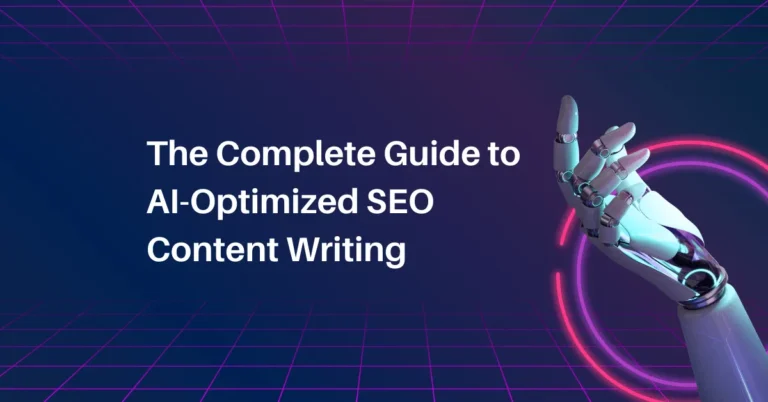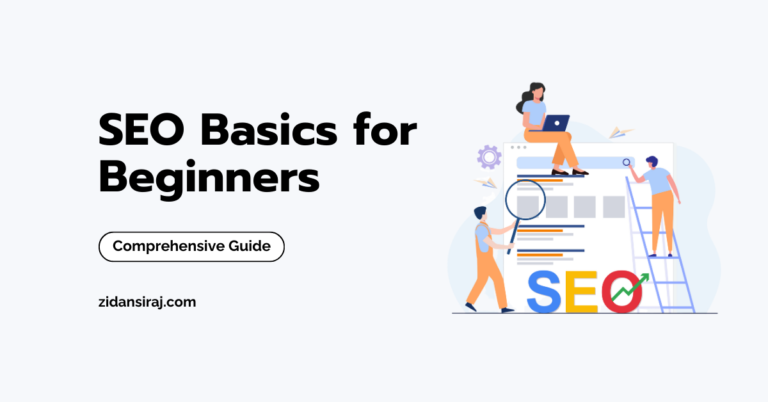As an SEO specialist myself, I understand the importance of creating content that is valuable to your target audience and ranks well on search engines.
Search engine optimization (SEO) is a field that is evolving constantly. It is important to stay ahead of the curve for any business looking to succeed online.
In this article, I will provide you with some valuable insights into how to write SEO-friendly content in 2023.
Introduction to SEO-friendly Content
First, let’s start with the basics. SEO-friendly content is content that is optimized to rank high on search engine results pages (SERPs). This type of content is written with both search engines and users in mind.
It is designed to provide valuable information to the reader while also including relevant keywords that will help it rank well on search engines.
SEO-friendly content consists of various elements, such as:
- Keyword research
- On-page optimization
- Content length and structure
- Link-building strategies
In the following sections, we will dig deeper into each of these areas and provide you with practical tips on how to create content that is optimized for search engines.
Understanding Search Engine Algorithms
To write SEO-friendly content, it’s important to understand how search engine algorithms work. Search engines, such as Google, use complicated algorithms to select which websites and pages should rank at the top of the SERPs.
The exact algorithm that search engines use is not known to the public, but we do know that it takes some things into account, such as the:
- Relevance and quality of the content
- The use of keywords
- The user experience as a whole
To create SEO-friendly content, you need to focus on providing high-quality, relevant content that meets the needs of your target audience.
This means creating content that addresses their questions, helps them solve their problems, or gives them useful information.
The Importance of Keyword Research
Keyword research is a critical part of creating SEO-friendly content. It involves finding out what words and phrases your target audience uses to look for information about your business.
By adding these keywords to your content, you can increase the chances of your content appearing on top of the search result page.
But, it’s important to use keywords strategically and avoid stuffing your content with too many keywords, which can result in penalties from search engines.
When conducting keyword research, focus on long-tail keywords that are more specific and less competitive than broad keywords.
This will help you target a more specific audience and increase the relevance of your content.
To learn more about keyword research and how it can help you create SEO-friendly content, check out my blog on keyword research in SEO.
On-Page Optimization Techniques
On-page optimization refers to the techniques you can use to optimize your content for search engines.
This includes optimizing your titles, headings, meta descriptions, and content body for search engines.
When optimizing your content, make sure to include your target keywords in your page titles, headings, and meta descriptions.
This will help search engines understand what your content is about and increase the chance of ranking well for those keywords.
Additionally, make sure to structure your content in a way that is easy to read and understand. Use short paragraphs, subheadings, and bullet points to break up your content and make it more digestible for readers.
To make the most of your on-page optimization efforts, it’s important to understand which on-page element carries the most weight for SEO. If you’re not sure what this is, don’t worry – I’ve got you covered.
One of the keys to writing SEO-friendly content is making sure your on-page optimization is on point. To ensure that you’re optimizing your content to the fullest, be sure to check out my on-page SEO checklist.
Best Practices for Writing SEO-Friendly Content
Besides the techniques mentioned above, there are several best practices you should follow when writing SEO-friendly content.
These include:
- Writing for your audience: When creating content, always keep your target audience in mind. Write in a tone and style that resonates with them and provides them with the information they need.
- Providing value: Your content should provide your audience with something of value. This means answering their questions, solving their problems, or providing them with valuable information.
- Using multimedia: Using images, videos, and other multimedia elements in your content. This can help increase engagement and enhance the user experience.
- Avoid duplication: Duplicate content can hurt your SEO efforts. Make sure to create original content that provides value to your audience
The Role of Content-Length and Structure in SEO
Content length and structure can also impact your SEO efforts.
Long-form content usually performs better than short-form content. It provides more opportunities to include relevant keywords and provide value to your audience.
Additionally, structuring your content in a way that is easy to read and understand can also help improve your SEO.
Use subheadings, bullet points, and short paragraphs to break up your content and make it more digestible for readers.
Link-Building Strategies for SEO
Link building is another important aspect of SEO.
The more high-quality links that point to your website, the more authority and relevance it will have in the eyes of search engines.
But, it’s important to focus on acquiring high-quality links from reputable websites.
Low-quality links, such as those from link farms or spammy websites, can hurt your SEO efforts and result in penalties from search engines.
The Impact of User Experience on SEO
Finally, user experience plays a significant role in SEO.
Search engines focus on websites that provide a positive user experience. This indicates that the website is providing value to its audience.
To improve the user experience of your website, focus on creating high-quality and engaging content that meets the needs of your audience.
Additionally, make sure your website is easy to navigate and loads quickly, as these factors can also impact user experience.
Future Trends in SEO-Friendly Content Writing for 2023
Looking ahead to 2023, several trends in SEO-friendly content writing are likely to emerge.
These include:
- A focus on voice search optimisation: More and more people are turning to voice search to find information online. Optimizing your content for voice search will become more and more important.
- A shift towards personalized content: Personalization is a trend that is likely to continue in 2023. Creating personalized content that speaks directly to your target audience can help improve engagement and conversions.
- An increased focus on user-generated content: User-generated content, such as reviews and social media posts, can help improve the credibility and relevance of your website in the eyes of search engines.
Conclusion: The Key to SEO Success through Content
In conclusion, creating SEO-friendly content is essential for any business looking to succeed online.
It’s important to stay up-to-date with the latest trends in SEO-friendly content writing and adapt your strategy accordingly.
Focus on creating high-quality and engaging content that meets the needs of your target audience. You will be able to unlock the secret to SEO success through content.






